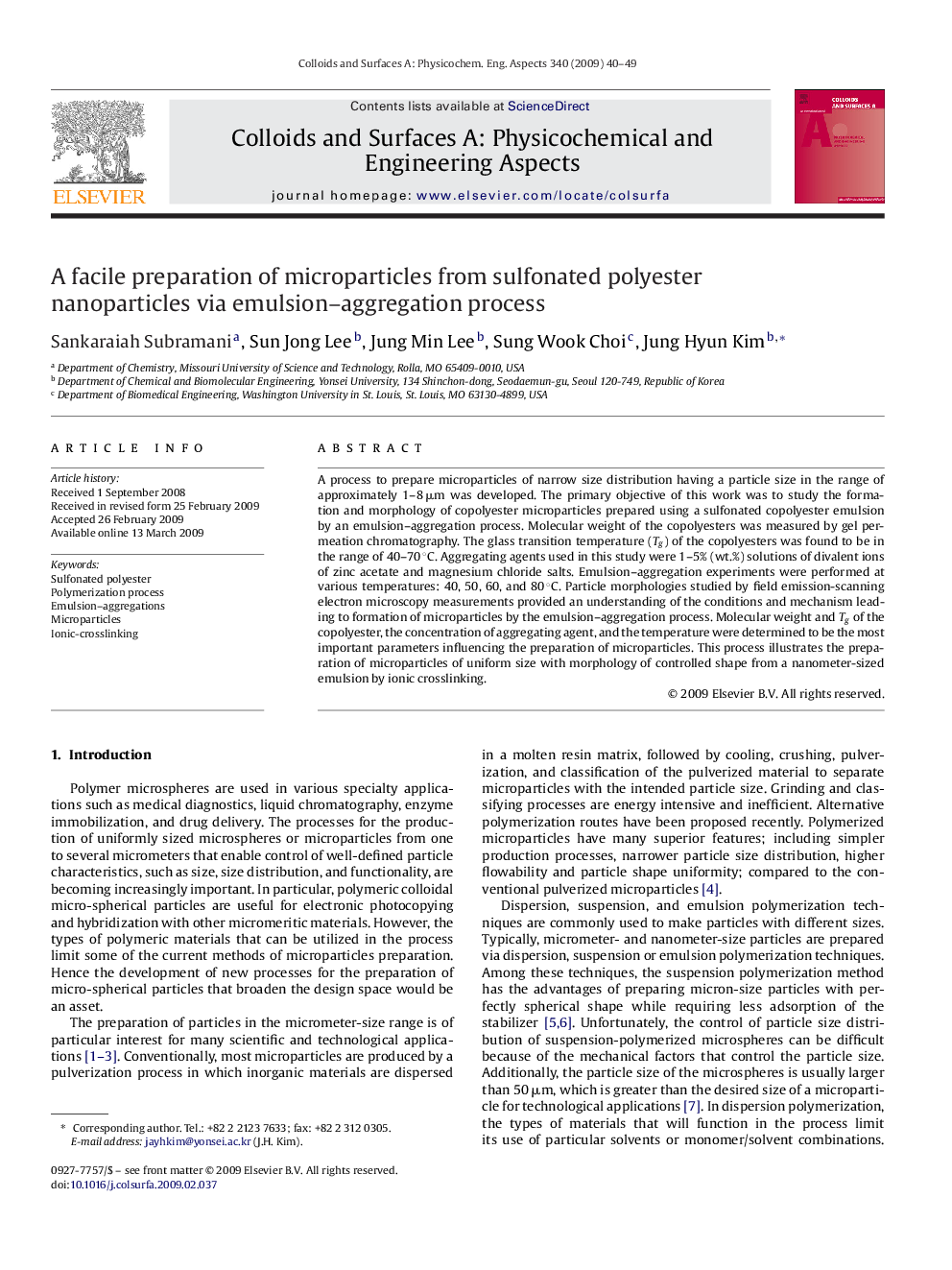| Article ID | Journal | Published Year | Pages | File Type |
|---|---|---|---|---|
| 596001 | Colloids and Surfaces A: Physicochemical and Engineering Aspects | 2009 | 10 Pages |
Abstract
A process to prepare microparticles of narrow size distribution having a particle size in the range of approximately 1-8 μm was developed. The primary objective of this work was to study the formation and morphology of copolyester microparticles prepared using a sulfonated copolyester emulsion by an emulsion-aggregation process. Molecular weight of the copolyesters was measured by gel permeation chromatography. The glass transition temperature (Tg) of the copolyesters was found to be in the range of 40-70 °C. Aggregating agents used in this study were 1-5% (wt.%) solutions of divalent ions of zinc acetate and magnesium chloride salts. Emulsion-aggregation experiments were performed at various temperatures: 40, 50, 60, and 80 °C. Particle morphologies studied by field emission-scanning electron microscopy measurements provided an understanding of the conditions and mechanism leading to formation of microparticles by the emulsion-aggregation process. Molecular weight and Tg of the copolyester, the concentration of aggregating agent, and the temperature were determined to be the most important parameters influencing the preparation of microparticles. This process illustrates the preparation of microparticles of uniform size with morphology of controlled shape from a nanometer-sized emulsion by ionic crosslinking.
Keywords
Related Topics
Physical Sciences and Engineering
Chemical Engineering
Colloid and Surface Chemistry
Authors
Sankaraiah Subramani, Sun Jong Lee, Jung Min Lee, Sung Wook Choi, Jung Hyun Kim,
